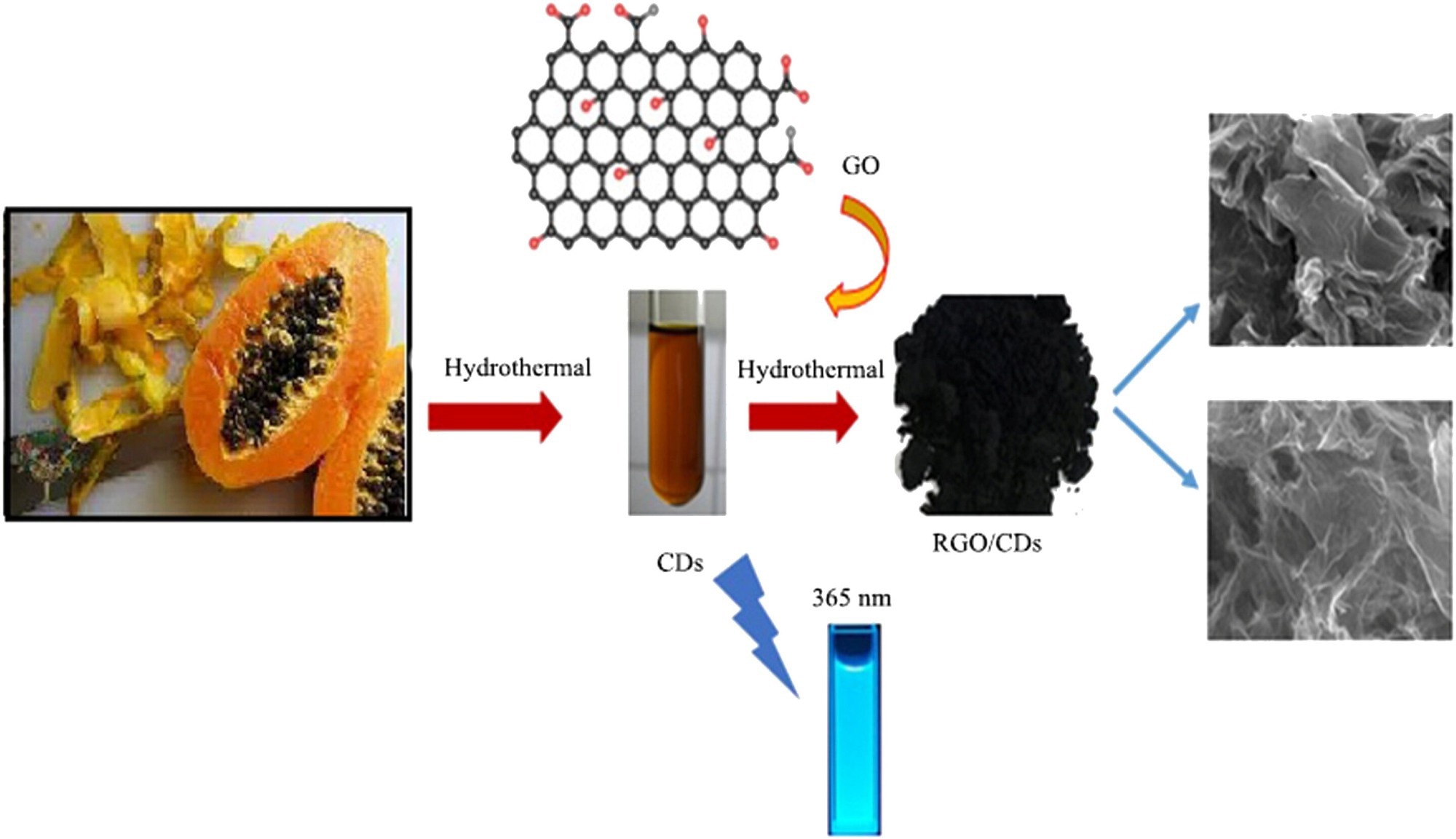Reviewed by Lexie CornerApr 24 2024
In a recent study published in the journal Bioresources and Bioproducts, an international team of researchers synthesized a reduced graphene oxide (RGO) and fluorescent carbon dot (CD) nanocomposite from papaya peel waste, marking a significant advancement toward sustainable environmental management and antimicrobial strategies.
 A recent study published in the Journal of Biological Resources and Bioproducts introduced carbon quantum. Image Credit: International Hellenic University
A recent study published in the Journal of Biological Resources and Bioproducts introduced carbon quantum. Image Credit: International Hellenic University
The study described a one-step hydrothermal process for producing the nanocomposite, which was subsequently analyzed using various spectroscopic and microscopic methods.
The study was inspired by the need to solve water contamination and environmental degradation caused by the widespread use of organic compounds, notably in the agricultural industry. The textile industry, which uses up to half of all dyes produced, contributes considerably to this pollution. The study sought to create a photocatalyst capable of decomposing these hazardous chemicals under sun irradiation.
The produced RGO/CD (RC) nanocomposites showed remarkable photocatalytic activity, with a degradation efficiency of 87 % attained in the composite with a 2:1 mass ratio of RGO to CDs. The RGO sheets in the nanocomposite enabled the transport and separation of photoinduced electrons, minimizing recombination and improving photocatalytic efficiency.
In addition to its photocatalytic properties, the nanocomposite demonstrated strong antibacterial activity against Bacillus subtilis (Gram-positive) and Pseudomonas aeruginosa (Gram-negative) bacteria. The nanocomposite tested against Gram-positive pathogens had the largest zone, indicating that it might be used as a broad-spectrum antimicrobial agent.
The study’s findings emphasize the novel usage of agricultural waste in the production of materials with several applications. The nanocomposite’s dual functioning as a photocatalyst and antibacterial agent demonstrates its potential for tackling environmental and public health issues.
The study also underlines the necessity of sustainable and environmentally friendly production processes, which aligns with worldwide initiatives to decrease waste and promote green chemistry.
The scientists propose that the synergistic impact of RGO and CDs in the nanocomposite improves its photocatalytic and antibacterial activity, making it a potential material for treating chronic infections and device-associated diseases caused by biofilm-producing multidrug-resistant bacteria.
Journal Reference:
Shahraki, H., S., et al., (2024) Papaya peel waste carbon dots/reduced graphene oxide nanocomposite: From photocatalytic decomposition of methylene blue to antimicrobial activity. Journal of Bioresources and Bioproducts. doi.org/10.1016/j.jobab.2023.01.009